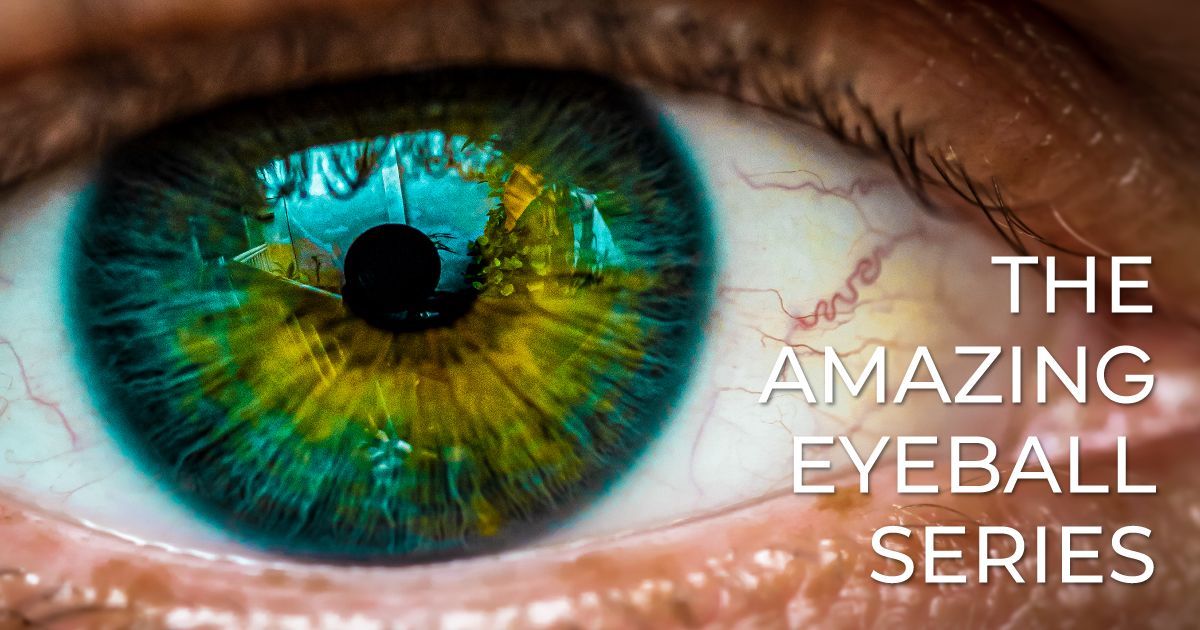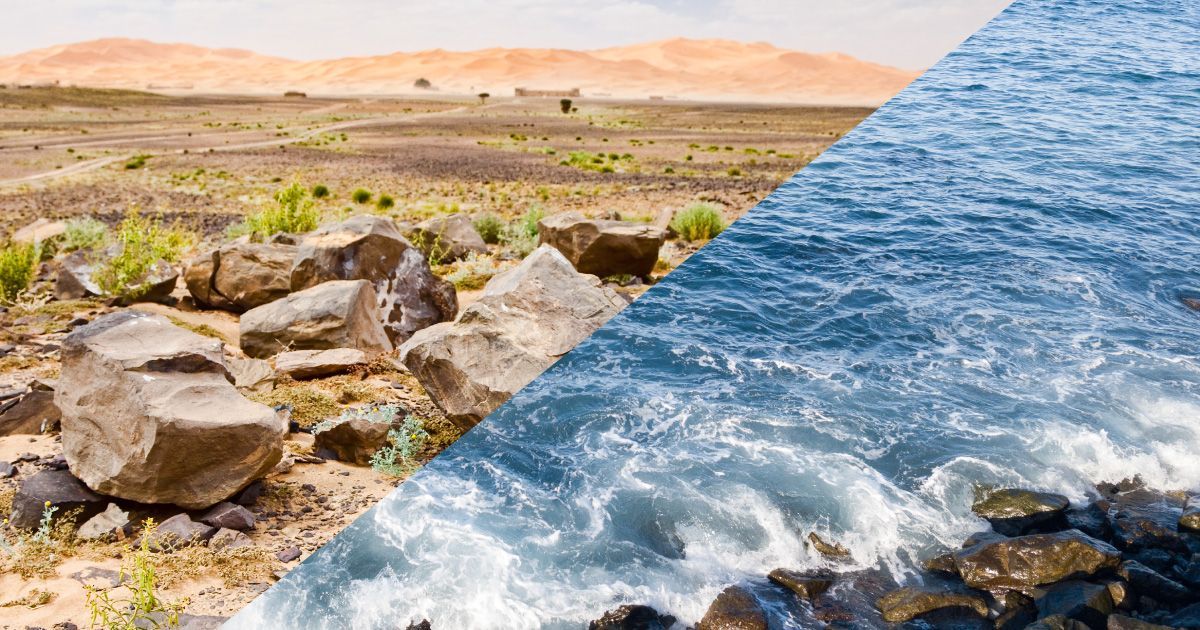The Amazing Eyeball: Part 1 - The Retina

Welcome to The Amazing Eyeball, a comprehensive 10-part series exploring the intricate structures that make up one of the body’s most remarkable organs - the human eye. Each article in this series delves deep into the anatomy and function of different parts of the eye. Throughout the series, we’ll uncover how these structures work together to produce the miracle of sight, along with insights into common eye conditions, cutting-edge treatments, and the eye’s natural healing abilities. Whether you're fascinated by the eye's biology or eager to learn how to protect your vision, this series will take you on a journey through the wonders of the human eye.
The Amazing Retina: How Your Eye Transforms Light into Vision
Read time: 5 minutes
The human eye is one of the most sophisticated organs in the body, capable of converting light into electrical signals that are sent to the brain, allowing us to see the world around us. At the heart of this process is the retina, a thin layer of tissue that lines the back of the eye. This essential part of our visual system is often overlooked, yet it plays a crucial role in transforming light into the vibrant, detailed images we rely on every day.
In this article, we’ll explore the structure and function of the retina, its role in vision, and the conditions that can affect its health.
The Structure of the Retina
The retina consists of several layers, each containing specialized cells that work together to process light. The most important of these cells are the photoreceptors, known as rods and cones, which detect light and color.
- Rods are responsible for low-light vision and are most sensitive to shades of gray. These cells allow us to see in dim conditions but do not detect color.
- Cones, on the other hand, are concentrated in the center of the retina and are responsible for detecting color. They function best in bright light and enable us to see fine details and distinguish different hues.
These photoreceptors are supported by other layers of the retina, including the retinal pigment epithelium (RPE), which helps nourish the photoreceptors and remove waste products. The layers of the retina work together like a complex network, ensuring that light is properly absorbed and processed before being sent to the brain.
How Light Becomes Vision
The process of turning light into vision is known as phototransduction. Here’s how it works:
- Light enters the eye through the cornea, passes through the lens, and hits the retina.
- Photoreceptor cells in the retina absorb the light, triggering chemical reactions within the rods and cones.
- This reaction generates electrical signals that travel through the retina and into the optic nerve.
- The optic nerve carries these signals to the visual cortex in the brain, where they are processed and interpreted as images.
This entire process happens in the blink of an eye (literally!), allowing us to see in real-time. It’s incredible how seamlessly our eyes and brain work together to transform light into the visual information we rely on daily.
The Fovea: Where Vision is Sharpest
At the center of the retina is a specialized region called the fovea, located within the larger area known as the macula. The fovea is densely packed with cone cells, making it the area of the retina responsible for sharp central vision. This is the part of the eye that allows us to read, drive, and perform tasks requiring detailed vision.
Because of the concentration of cones, the fovea plays a critical role in color vision and detail perception. It’s why we can focus on fine details when looking directly at an object, while our peripheral vision remains less sharp and relies more on rods.
Retinal Conditions and Their Impact on Vision
While the retina is vital for vision, it is also susceptible to a variety of conditions that can significantly impact sight. Here are some of the most common retinal disorders:
- Retinal Detachment occurs when the retina separates from the back of the eye. This condition requires immediate medical attention as it can lead to permanent vision loss if not treated promptly. Symptoms may include seeing floaters or flashes of light.
- Macular Degeneration is a condition that affects the macula, the central part of the retina. It leads to the gradual loss of central vision, making it difficult to read or recognize faces. Age-related macular degeneration (AMD) is the most common form and primarily affects older adults.
- Diabetic Retinopathy is a complication of diabetes that damages blood vessels in the retina. Over time, this condition can lead to vision loss if not properly managed.
- Retinitis Pigmentosa is a genetic disorder that affects the retina’s ability to respond to light. This condition often results in tunnel vision and night blindness, and in severe cases, it can cause total blindness.
Each of these conditions highlights the importance of maintaining retinal health and seeking timely treatment for any visual disturbances.
Maintaining Retinal Health
While some retinal conditions are hereditary or related to aging, there are several steps you can take to protect your retina and maintain good eye health:
- Regular Eye Exams: Early detection of retinal issues is key to preventing vision loss. Make sure to schedule comprehensive eye exams that include a retinal examination.
- Healthy Diet: Nutrients like omega-3 fatty acids, lutein, and vitamin C can support retinal health. Leafy greens, fish, and fruits high in antioxidants can help reduce the risk of retinal conditions.
- Manage Chronic Conditions: If you have diabetes, managing your blood sugar levels is crucial to preventing diabetic retinopathy. Similarly, controlling blood pressure and cholesterol can help protect your eyes from damage.
- Protect Your Eyes from UV Light: Prolonged exposure to UV rays can damage the retina. Wearing sunglasses that block 100% of UVA and UVB rays is an easy way to protect your eyes.
- Avoid Smoking: Smoking increases the risk of retinal conditions like macular degeneration. If you smoke, quitting can improve your overall eye health.
The Future of Retinal Health
Advancements in medical technology continue to improve our understanding and treatment of retinal diseases. Researchers are exploring gene therapies, stem cell treatments, and retinal implants as potential solutions to restore vision in those with severe retinal damage. These innovations offer hope for people affected by conditions that were once considered untreatable.
As our understanding of the retina grows, so too does our ability to protect and preserve vision for future generations.
The Takeaway
The retina is an extraordinary part of the eye that transforms light into the images that shape our perception of the world. From the photoreceptors that detect light to the optic nerve that sends signals to the brain, the retina plays a pivotal role in every moment of our visual experience.
In the next article in this series, we’ll explore the cornea, the transparent layer at the front of the eye that acts as the eye’s natural window. Stay tuned as we continue to uncover the remarkable structures that make up the human eye.
Read the next article in this series: The Amazing Eyeball: Part 2 - The Cornea
Share this blog post on social or with a friend:
The information provided in this article is intended for general knowledge and educational purposes only and should not be construed as medical advice. It is strongly recommended to consult with an eye care professional for personalized recommendations and guidance regarding your individual needs and eye health concerns.
All of Urban Optiks Optometry's blog posts and articles contain information carefully curated from openly sourced materials available in the public domain. We strive to ensure the accuracy and relevance of the information provided. For a comprehensive understanding of our practices and to read our full disclosure statement, please click here.


















